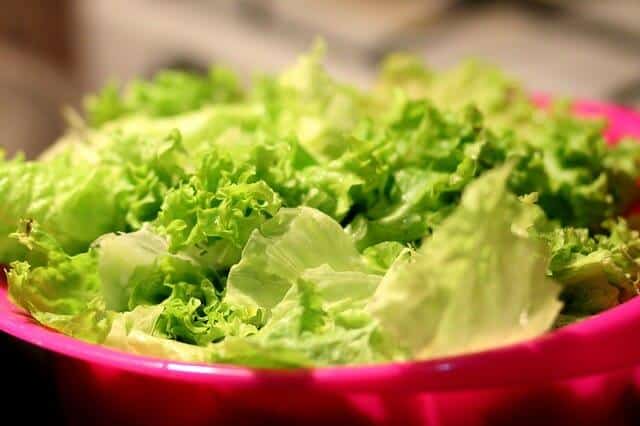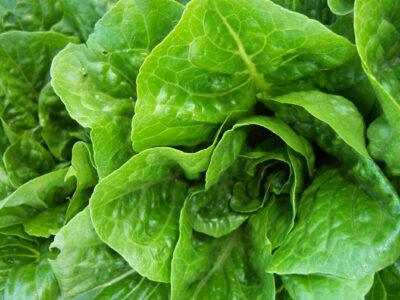Nature gives us a great hint for choosing healthy fruits and vegetables – color. The darker the berry, the higher the antioxidant value. Similarly, the darker the shade of lettuce is, the higher its nutritional content.
Take iceberg lettuce, for example. The longtime and popular American salad staple has a pale color and, accordingly, offers little in the way of vitamins and minerals. In fact, it ranks last on our list of healthy lettuce.
If you love the crispiness that iceberg lettuce brings to your sandwich or salad, never fear. Just combine it with one or more of these more nutritious choices.
Romaine – With its dark red and green color and its elongated leaves, romaine (also called “cos”) is rich in folate and vitamins A and C. It also contains a healthy dose of Vitamin K, zinc and potassium. Each romaine leaf has a sturdy rib that helps it stand up well in salads and on sandwiches, but its flavor is surprisingly sweet. Even better: Romaine will last for 10 days or more in your fridge.
Need Non-GMO Lettuce Seeds? Get Them From A Company You Can Trust! [2]
According to the USDA National Nutrient Database, just one leaf of romaine lettuce contains 17 percent of the recommended daily value of Vitamin A. Vitamin A promotes healthy vision, bones and cell division, as well as respiratory, intestinal and urinary functions.
Loose leaf lettuce — Second only to romaine in Vitamin A content is loose leaf lettuce. As its name implies, loose leaf lettuce appears to be barely joined to its stem. Loose leaf contains the most fiber of any lettuce and also is rich in potassium. Plan to eat loose leaf soon after harvesting or purchasing, however; it is quite delicate.
Butterhead – Soft green in color and sweet in taste, butterhead lettuce includes the Bib and the Boston varieties. They offer a soft, almost velvety texture, to salads. Butterhead has double the magnesium content of any other lettuce and is a good source of vitamin A. It also has small amounts of calcium and iron. Butterhead is fragile, however, and will stay fresh only a few days in your refrigerator.
Leaf lettuce — With its bright red or green colors, mild-tasting leaf lettuce adds visual variety to your meal. It is a good choice for sneaking some Vitamins A and K into the diet of the picky eaters in your family. The greener or redder the leaf, the more nutrients this lettuce provides, according to the Academy of Nutrition and Dietetics.
And now a word about iceberg lettuce. It has gained a bad rap in recent years, but, like all lettuce, iceberg still offers some benefits. This inexpensive variety may be low in nutrition, but it is also low in calories, and it has a high-water content that can contribute to your daily hydration.
When you mix iceberg with other lettuce varieties or with tasty nutritious greens — including kale, spinach, Swiss chard, endive, escarole, arugula, chicory, radicchio or watercress — your salad will be a nutritional powerhouse.
What is your favorite type of lettuce? Share your lettuce tips in the section below:
Sources:
Cicero, Karen. Giant book of kitchen counter cures. Jerry Baker publisher, 2001. Print.

